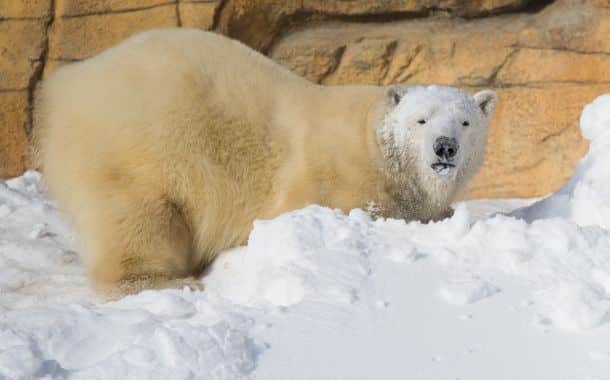
This is the second installment in Dave Zuchowski’s series on discovering Canada’s lesser-known provinces by car. For more on the road less traveled, check out Part 1, Part 3, Part 4, and Part 5.
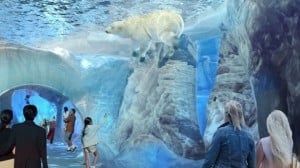
Part 2: More from Winnipeg
On a visit to Winnipeg’s Assiniboine Park Zoo, I discovered that the zoo is in the process of constructing a new, $50-million “Journey to Churchill” installation. Set to open sometime in June of 2014, the section is dedicated to the polar bear, the largest land carnivore in the world, and references the town of Churchill on Hudson Bay, some 621 miles north of Winnipeg and the home to the polar bear’s southern most population.
Starting in September, when the polar bears begin congregating on the Churchill coastline, and peaking in October and November, tourists from around the world hone in on Churchill for up-close and personal encounters with the massive animals aboard specially designed tundra vehicles.
Resembling large buses on four-wheel platforms, the vehicles are designed to move over snow and ice and protect passengers from the hungry carnivores who’d not think twice about adding humans to their meaty diet. To make photo-taking a bit easier, the vehicle is equipped with a deck at one end where passengers can snap face-to-face shots of the furry beasts in safety.
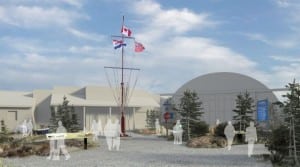
Tempted to add Churchill to my auto tour itinerary, I was told that the only way in to the town of 1000 residents located on the edge of the Arctic was by air or rail—a-48 hour trip from Winnipeg. Happily, I settled for a look at the International Polar Bear Conservation Centre, a key component to the Journey to Churchill exhibit. Current ursine residents include adult bears Hudson and Storm and two female cubs, Kaska and Aurora.
When open in June, the new ten-acre exhibit will be able to hold six polar bears and other cold-weather species, and will take visitors through three different zones and landscapes: the Wapusk Lowlands, the Gateway to the Arctic and the Churchill Coast. In the domed Aurora Borealis Theatre, they will be able to see the Northern Lights splay out above them and watch a film that shows the seasonal beauty of the Arctic and teaches about the people, animals and plants that inhabit the area.
The zoo offers a tram ride through much of its 80-acre expanse that allows visitors to get on and off at several attractions. One of my favorites is the Australian Walkabout, a large, fenced-in enclosure that allows visitors to walk among the zoo’s 14 or so red kangaroos and their youngsters. The largest species of kangaroo, the reds are also considered docile and good-natured and seem to show off for visitors, hopping about on their muscular hind legs. The kangaroos share the Walkabout with four emus, the second largest bird in the world by height, second only to their ostrich cousins.
Just down the road from the zoo, Fort Whyte Alive, a 640-acre environmental and recreational center, is open year-round. One focal point here is a 70-acre bison prairie, which visitors can see the huge animals at close range.
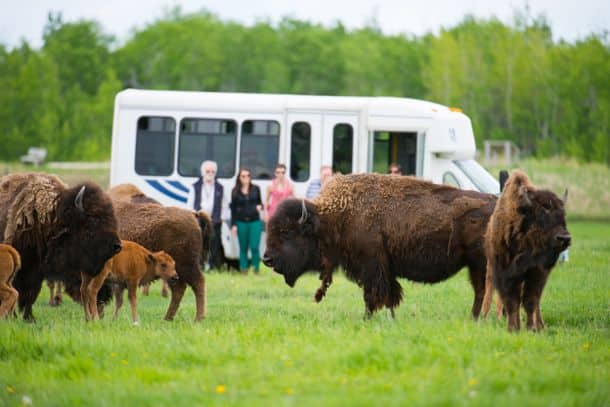
After browsing through the exhibits in the Reception Centre, I joined a guided ecotour that explained how bison influenced the lives of three groups of people that lived there: the Native Americans, the Metis (people of mixed Aboriginal and French Canadian ancestry) and the European pioneers.
On the tour, you’ll board the bus, then enter the bison compound for an up-close look at 30 or so bulls, cows and calves. Next you’ll head out for a walk through the forest with a guide who’ll point out survival hints then give you a look inside a replicated pioneer sod house and a thirteen-pole Cree teepee. Visitors can even try their hand with an atlatl, a primitive spear-throwing device. After a paddle around the lake on a voyageur canoe, the tour ends with a sampling of wild bush tea and bannock, a pan-fried flatbread.
Amazingly, as many as 15,000 Canada geese congregate on the center’s lake in October to build up their fat reserves before their migration further south. I was told it’s quite a sight to behold.
To learn more about the province of Manitoba, stop in at the Manitoba Museum. Several cuts above comparable history and cultural museums, the Manitoba is home to almost 2.6 million artifacts and nine permanent galleries and is a recipient of the Michelin Green Guide’s top award. Highlights include a walkthrough of a full-size replica of a 17th-century ship, “the Nonsuch,” a look at the Boreal Forest as it looked hundreds of years ago and the Ancient Seas Gallery, which recreates the tropical sea environment that 450 million years ago covered the area around, would you believe, present-day Churchill.
If the outdoors is more your bag, stroll through Winnipeg’s turn-of-the-19th-century Exchange District, now a national historic site that boasts a spectacular collection of terra cotta and cut stone architecture in a 20-city-block area. To get really in the know, reserve a guided walking tour by phoning 204-942-6716.
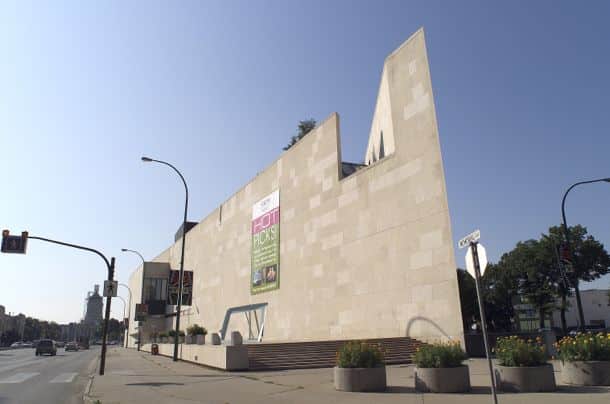
For art lovers and indoor types, the architecturally stunning Winnipeg Art Gallery is billed as Canada’s oldest public art gallery and is the nation’s sixth-largest. Home to the world’s largest collection of Inuit art, its collections also include more than 24,000 historical and contemporary works from Canada and around the world.
For more information on Winnipeg, phone 1-855-PEG-CITY (734-2489) or visit tourismwinnipeg.com. For more information on Manitoba, phone 1-800-665-0040 or visit travelmanitoba.com.
Part 3 of Dave’s Canadian journey introduces him to Spruce Woods Provincial Park and Regina, Saskatchewan. And check out more from Dave on his blog at pittsburghowlscribe.blogspot.com.




